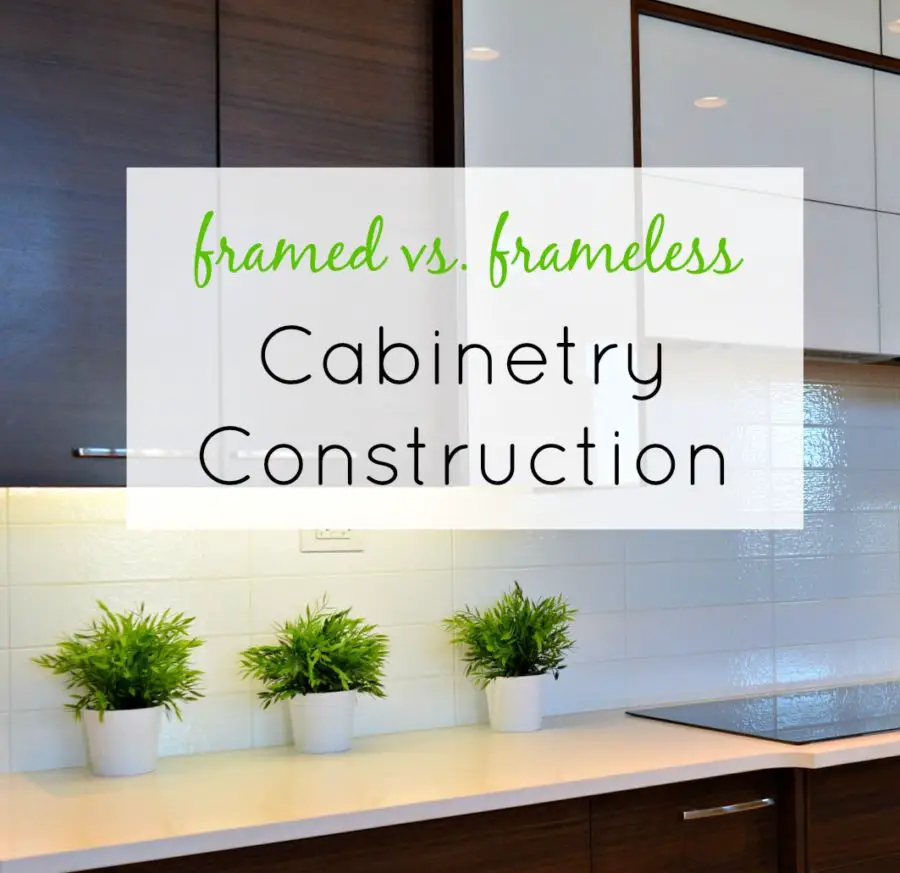There are two main types of construction for cabinets: framed and frameless. So what’s the difference and more importantly, should you care? Let’s dig in…
The backstory
A long time ago, I worked for a millwork company that had a custom division. As head of marketing, it was my job to get pictures of the beautiful, high end cabinetry they created for the division’s portfolio. I remember walking into the multi-million dollar residences that would be home to the millwork and being in awe. I’d go home at night and daydream about how I could infuse a bit of that aesthetic into my more modest floorplan.
So, one year, when the guys at the shop mentioned they were a little slow and asked if I was interested in any cabinetry to keep the schedule full (read: at a price I could actually afford), I jumped at the chance. Back then, I didn’t pay much attention to the construction of the cabinets – but I knew the look I was going for from my photo shoots.
Since then, I’ve had another set of built-ins created (with a different shop) and my kitchen remodeled using cabinetry from a commercial custom cabinet manufacturer. But each time, I choose the same construction type because it fits my Colonial-style home: framed with inset doors. And I couldn’t be happier with the result.
So, what’s your cabinet construction style?
Framed
We’ll start with the style that is traditionally built in the United States: framed. This type of cabinetry has face frames attached to the front of the cabinet box. The frames are constructed from four 1.5”* pieces of wood called stiles (vertical members) and rails (horizontal members). Cabinet doors are then attached to the frame.

The reasons you might choose cabinets with a face frame:
- To achieve a traditional aesthetic. Certain door installations (standard overlay, partial overlay and inset) can only be done with a face frame. (more on this in a future post!)
- Face frames also allow for the use of an exterior hinge, which for historic homes, may be desired.
- Some argue that the face frames give the cabinet more structural stability.
- The wood face frames obscure the edges of the interior of the box (which is often made of plywood or particleboard).
- The frames also provide a strong place to hang the door.
- Framed cabinets are attached face frame to face frame. This provides more material to join the cabinet boxes with a longer screw for greater stability.
Frameless
Frameless cabinets do not have a face frame – the cabinet door creates the front of the box. Frameless cabinetry is the European style of cabinetry construction that has come into fashion in recent years to achieve a sleek, more modern look (think Ikea or high end Italian designs). In frameless construction the door is attached directly to the sides of the cabinet boxes. With no face frame, the necessary stability is achieved through thicker cabinet boxes.

The reasons you might choose frameless cabinets:
- To achieve a more contemporary or clean aesthetic. Frameless cabinets use only full overlay doors so an ultra-sleek look can be achieved.
- Frameless cabinets are sometimes referred to as “full access” cabinetry because eliminating the face frame gives you better access to the inside of the cabinet. And you won’t forget you have that box of cereal lurking behind the center stile.
- Drawers in frameless cabinetry are larger because they do not have to account for the face frame. You will find the drawers are both wider and deeper than those in framed cabinetry.
Hybrid
Some manufacturers and woodworkers offer a hybrid construction version. This new method marries the look of a face frame with the convenience of greater access to the cabinets. Basically, the manufacturers size the face frames down and then flush the inside of the cabinet box with the frame. The center stiles are eliminated altogether to improve accessibility. Some even remove the center rail in the base cabinets between the drawer and door. Doors are then attached to the side of the cabinet box allowing concealed, soft-close hinges to be used.
This is the type of cabinetry I have in my kitchen.
The bottom line
If space is at a premium in your kitchen or you prefer a clean, modern style, frameless cabinetry may be the way to go. But, if you have the space for lots of cabinetry to corral all of your kitchen essentials and love a traditional look, framed cabinetry (or hybrid if you can find it at your price point) would be the pick for you!











